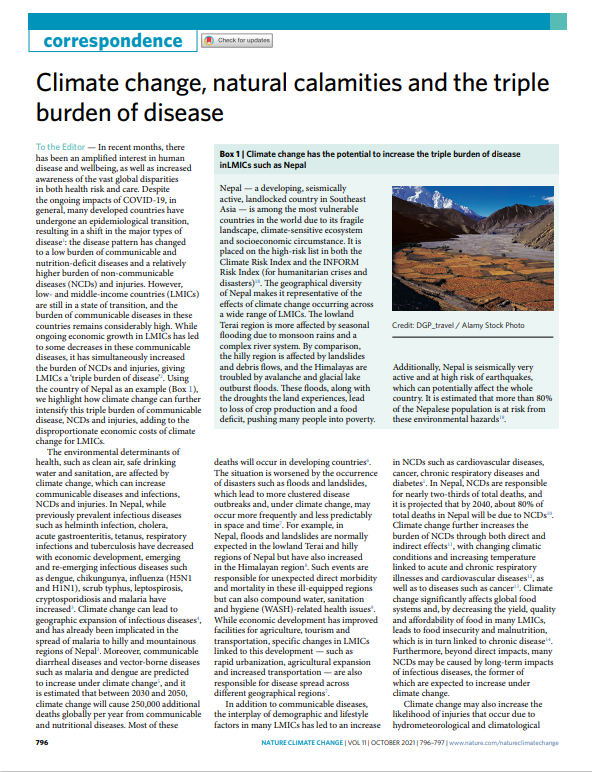Climate change, natural calamities and the triple burden of disease

Citation: Karn, M., Sharma, M. Climate change, natural calamities and the triple burden of disease. Nat. Clim. Chang. 11, 796–797 (2021). https://doi.org/10.1038/s41558-021-01164-w
Abstract: In recent months, there has been an amplified interest in human disease and wellbeing, as well as increased awareness of the vast global disparities in both health risk and care. Despite the ongoing impacts of COVID-19, in general, many developed countries have undergone an epidemiological transition, resulting in a shift in the major types of disease1: the disease pattern has changed to a low burden of communicable and nutrition-deficit diseases and a relatively higher burden of non-communicable diseases (NCDs) and injuries. However, low- and middle-income countries (LMICs) are still in a state of transition, and the burden of communicable diseases in these countries remains considerably high. While ongoing economic growth in LMICs has led to some decreases in these communicable diseases, it has simultaneously increased the burden of NCDs and injuries, giving LMICs a ‘triple burden of disease’2. Using the country of Nepal as an example (Box 1), we highlight how climate change can further intensify this triple burden of communicable disease, NCDs and injuries, adding to the disproportionate economic costs of climate change for LMICs.
Author(s): Karn, M, Sharma, M.
Year: 2021
Language: English
Region(s): NEPAL
Resource Type: Journal Articles
Source: Other
